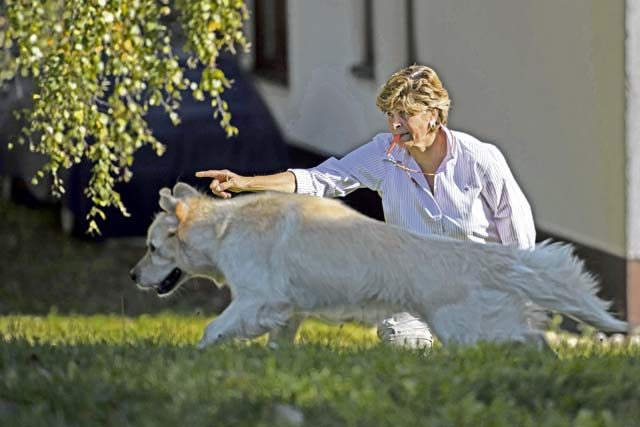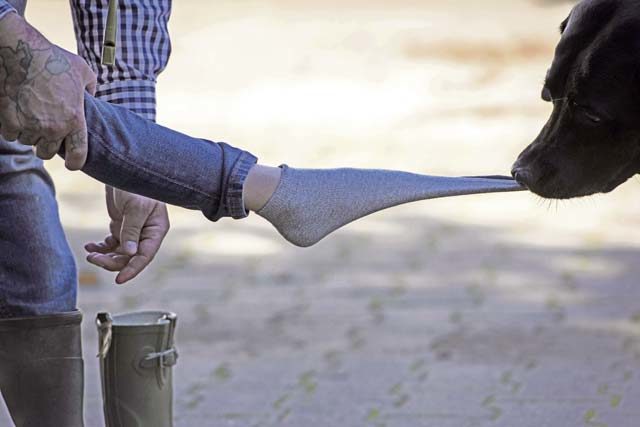
For most people, having a dog around the house consists mainly of taking care of the pet. Since WWI, dogs have been trained to do much more than provide passive security for the family. From calming a person with post-traumatic stress disorder to being able to dial 911 on the phone, service dogs have separated themselves from the rest of the pack.
Members of an organization specializing in the training of service dogs recently held a service dog demonstration in Kaiserslautern to show and explain how service dogs differ from their average household counterparts.
The members explained that the selection for service dogs starts at birth. A trainer will select individual puppies from a litter based on the behavior of the puppy, looking for specific characteristics. After being cared for by a veterinarian, a family will raise and provide basic behavior training for the puppy until it is about 1 1/2 years old.
The dogs will then be trained for another six months to learn how to help with more specific physical disabilities, mental illnesses like PTSD or even to visit hospitals and schools.
Marina Dahinten, a veteran service dog trainer and volunteer, said the dogs learn certain behaviors early on in their lives and are taught not to bark unless it is an emergency situation. They are also taught to open drawers, close doors, and remove things like socks and hats.
After the completion of training, the search for the perfect human candidate begins.
The matching process involves a trainer selecting four or five different dogs that are trained for the candidate’s disability. Once the match has been made, the pair will train for a couple months together before they are officially made a team.
“Basically, the person doesn’t choose the dog; it’s mostly the dog that chooses the person,” said Richard Rice, a U.S. Army veteran and partner with service dog Abby. “We do it like that because if the dog doesn’t have any will to work with that person, they won’t make a good team. We believe happy dog, happy life.”
Being made a team means the pair will spend their time exclusively training together and the service dog will live with the member.
“People have many well-trained house pets, but what you don’t always have is the dog thinking along with the person,” Dahinten said. “We know one man who ended up in a wheelchair because of a parachuting accident. One day when Tom was getting out of his van to get into his wheelchair positioned next to it, he fell. Without even giving his service dog Fay a command, Fay jumped into his van, grabbed his phone and handed him the phone so he could call for assistance.”
Dahinten further explained that Fay was only able to help Tom because of her sensitivity to her partner’s needs.
Chris Holland, a U.S. Army veteran and partner of service dog Pepper, said the organization knew exactly which dog would match perfectly with him when he entered the program to receive a service dog.
Holland said Pepper barked a lot when they would train together. He said that he was intimidated at first but discovered Pepper had a huge passion for the training they were doing together.
“The first couple weeks went really slow. I always had this thing in the back of my head: It wasn’t going to happen, and I was always going to get kicked out,” Holland said. “Once I got over that fear, Pepper and I merged as one. Now I know what (upsets him); he knows what (upsets me). Now we’re like an old married couple.”
Editor’s note: This is a two-part series. In the next part, read about how service dogs helped two veterans with PTSD in the Kaiserslautern American or at www.Ramstein.af.mil.








